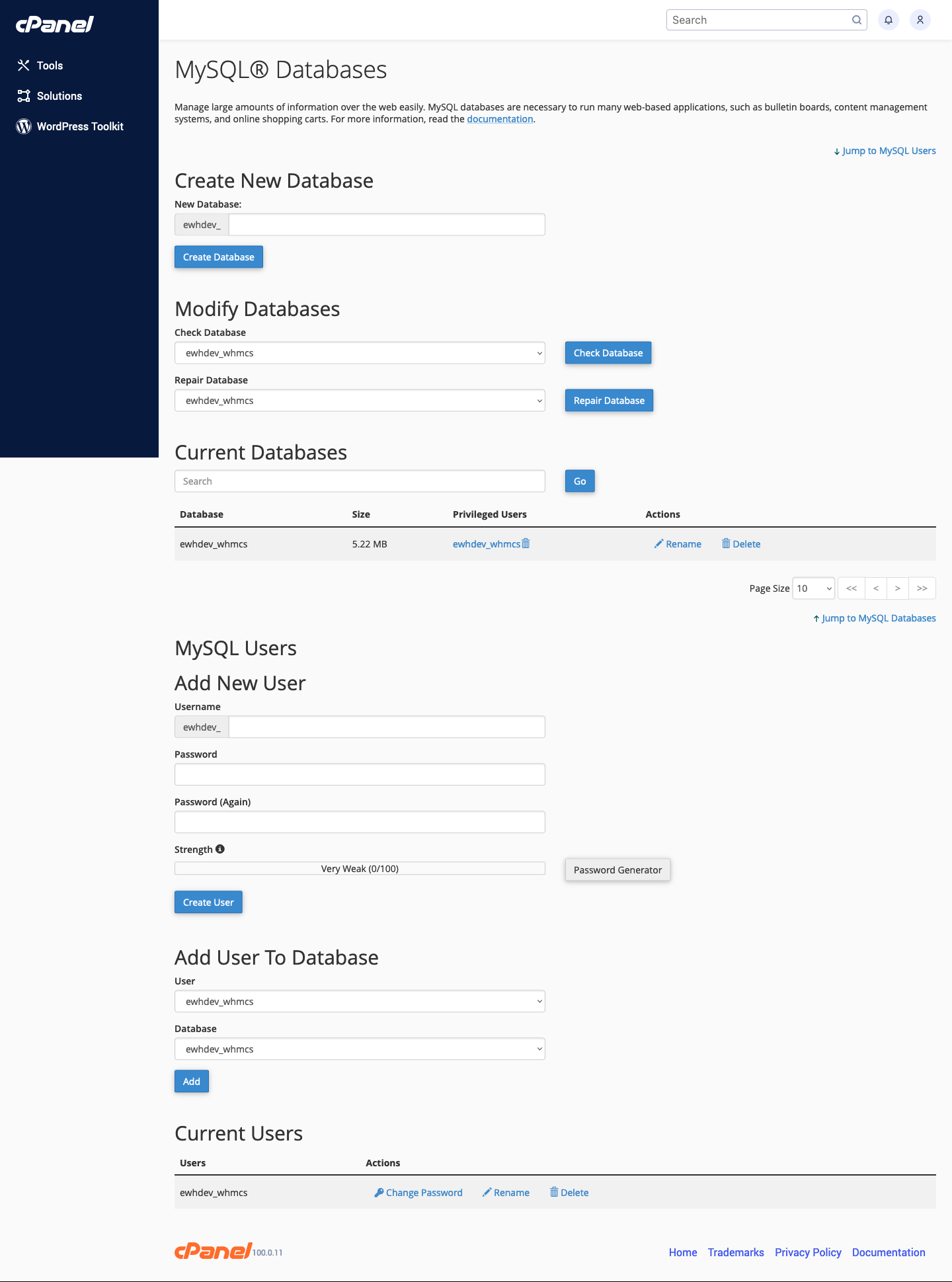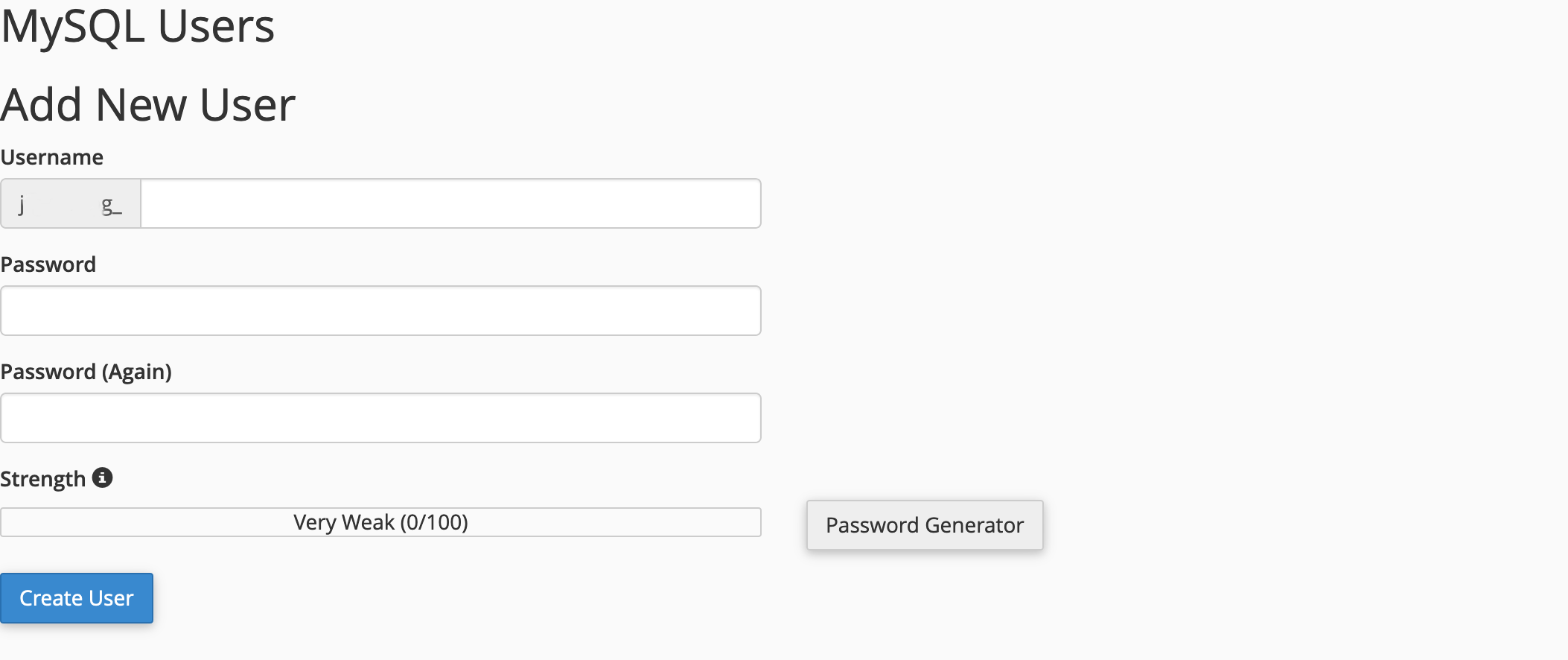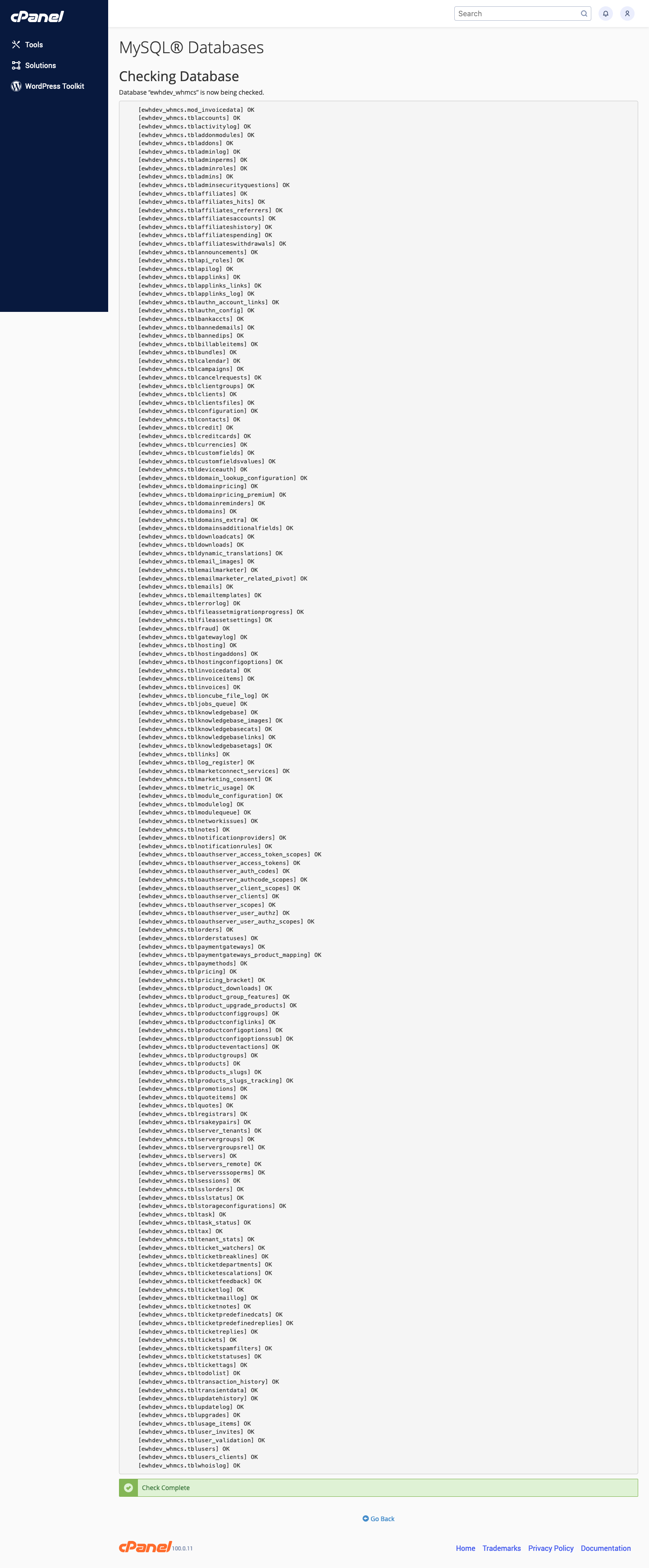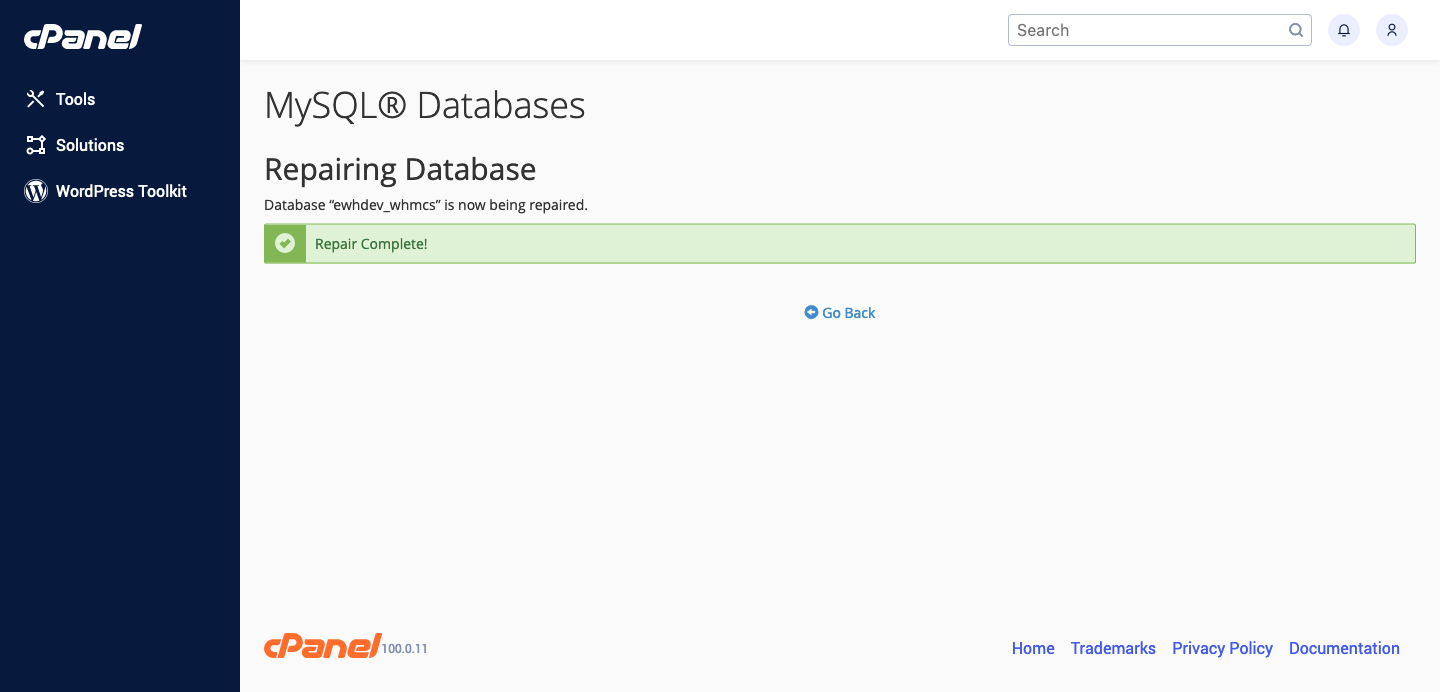cPanel MySQL Databases
Difficulty Level: Easy
-
Login to your cPanel Account
-
Locate the Databases section and click on MySQL® Databases shown below
- The screenshot shown below is what you will see after clicking MySQL® Databases from step 2 above
-
Create a Database Name First
-
Create a Database User and Password. We strongly suggest using the Password Generator. Do NOT create a weak password.
-
Scroll to the bottom and add the user to the database.
-
You’ll see the following screen and you’ll choose All Privileges in most cases. Refer to the Software vendor you are working with to confirm.
Make sure you read the sections below about creating and adding your Database User to your Database
If you need any assistance, please submit a ticket for Technical Support
Difficulty Level: Easy
-
Login to your cPanel account.
-
Locate the Databases section and click on MySQL® Databases
- On the MySQL® Databases page, scroll down until you see the Add New User section (shown below).
-
Give your new User a name and create a Strong password. Once finished, click Create User
-
The new User will appear near the bottom of the page under the Current Users section and you can Add that User to a Database.
If you need any assistance, please submit a ticket for Technical Support
Difficulty Level: Easy
You will only see this section if you have atleast 1 Database and 1 Database User created
-
Login to your cPanel account.
-
Locate the Databases section and click on MySQL® Databases
- Scroll down to the section that says Add User to Database
-
Choose the Database and Username you are working with and click Add
-
You’ll see the following screen and you’ll choose All Privileges in most cases. Refer to the Software vendor you are working with to confirm.
If you need any assistance, please submit a ticket for Technical Support
Difficulty Level: Easy to Medium
It’s important to periodically change the password for your Database Username to maintain strong security.
After you change this password, make sure you update any config file(s) for your website that depend on this password. Otherwise, your website will stop working.
-
Login to your cPanel account.
-
Locate the Databases section and click on MySQL® Databases
-
On the MySQL® Databases page, scroll down until you see the Current Users section.
-
Locate the Username that you wish to update the password for and click Change Password
- On the next screen, you’ll see 2 fields to enter your new password and confirm the new password. Then click Change Password.
We suggest using the password generator so that you have a strong and unique password. Copy and paste it into the config file(s) of your website that depend on it to make the database connection.
If you need any assistance, please submit a ticket for Technical Support
Difficulty Level: Easy
If you suspect your database may be corrupted, you may login to cPanel and use the Check Database feature to determine if any issues are present.
This process is easy to follow and does not require a backup of your database prior to running the check. To get started:
-
Login to your cPanel account
-
Find the Databases section and click on MySQL® Databases
- Scroll down to the section titled Modify Databases
-
The first option is Check Database
-
Choose the Database you would like to check and click the button
- If the system detects a problem in the database, it displays the name of the corrupt table.
- If the Check Complete message displays, the database functions correctly.
If no issues are detected, you may either check another Database or leave this screen. If an issue is detected, scroll down to the next section on this page to see how to repair it.
If you need any assistance, please submit a ticket for Technical Support
If there are any corrupted tables within your database, you will now want to repair them.
This process is easy to complete and does not require a database backup prior to starting.
-
Login to your cPanel account
-
Find the Databases section and click on MySQL® Databases
- Scroll down to the section titled Modify Databases
-
The second option is Repair Database
-
Choose the Database you would like to repair and click the repair button
- If the system cannot repair the database, it will attempt to determine the source of the corrupt data.
- If the Repair Complete message displays, the system successfully repaired the database.
Hopefully, cPanel was able to repair your database. If not, your problem may be more severe and you should contact a qualified developer to assist in resolving the issue for you.
If you need any assistance, please submit a ticket for Technical Support








